


Hype:
The Miners' Park Historical Trail begins in front of the wooden mine car. The trail continues to climb into the trees. For .25 mile, the trail goes past 16 displays of mining equipment, reconstructed workings and a refurbished cabin. There is a picnic area across the road from the Miners' Park, complete with tables and fire rings. Please pack out all that you bring in.
Trail Condition: Class 1 (Trail is either paved or gravel. Navigation skills are not needed because there is only one trail or because there are signs. Elevation gains are gradual or there are stairs.)
Time: Less than 1 hour
Length: 0.25 miles round trip
Elevation Gain: Negligible
Fees: None
Recommended Ages:
 | 0-3 |
 | 4-11 |
 | 12-19 |
 | 20-49 |
 | 50-69 |
 | 70+ |
Recommended Months to Visit:
| Jan |
| Feb |
| Mar |
| Apr |
| May |
| Jun |
| Jul |
| Aug |
| Sep |
| Oct |
| Nov |
| Dec |
Links: www.marysvaleutah.org/
Navigate to 38.411056, -112.332131.

Paint your wagon and come along! When American miners first traced placer gold up a seemingly untouched creek in Bullion Canyon, they were surprised to discover a crude ore crushing device – called an arrastra – and piles of ore. Who could have left this early artifact of mining? Perhaps gold hungry Conquistadores, riding north out of New Spain in the 1700s, had been the first to discover the riches of the canyon. To the good fortune of later miners, the Spanish seem to have left most of the gold-bearing veins in the canyon untapped. By 1868, the Ohio Mining District was established in Bullion Canyon and boasted three camps – Weber City, Virginia City, and Bullion City. The population of Bullion City is recorded as 1,651 in 1880. One of the more spectacular producers in the canyon was the Dalton Mine. Records show that $390,000 was mined from the first 100 feet of workings and that the Sylvester-Soderberg Stamp Mill was soon built to process the Dalton’s ore. Tailings and foundations from this operation still can be seen on the south side of the creek about a mile downstream from this spot. By the 1930s, the assay value of Bullion Canyon’s ore had dropped below mill grade. At this price, it was uneconomical to recover gold from the ore. The Bully Boy Mine and Mill, just east of this spot, hung on until 1938. Then, everyone was gone. But are they? It is said that on still, moonless nights a lone pick can be heard in the distance as if some ancient prospector is still searching for a new lode. Experience the life and times of the Bullion Canyon miners through the tools of their trade. Please follow the ¼ mile trail which starts on your right.
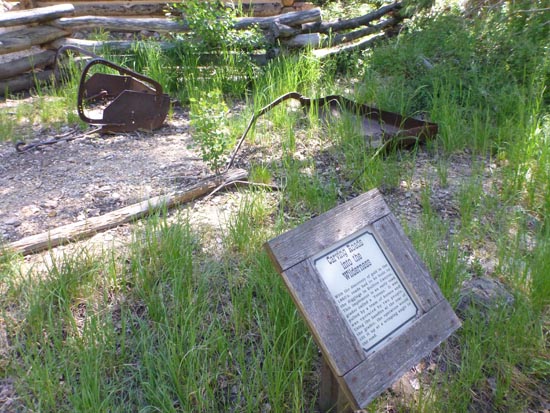
With the discovery of gold in the 1860s, roads had to be built to the diggings in Bullion Canyon. This implement is an early road grader called a "Fresno." It was pulled by a team of horses and was operated by two people. Using the handles at the rear of the grader, the operators would tilt it up at a scraping angle to the road.
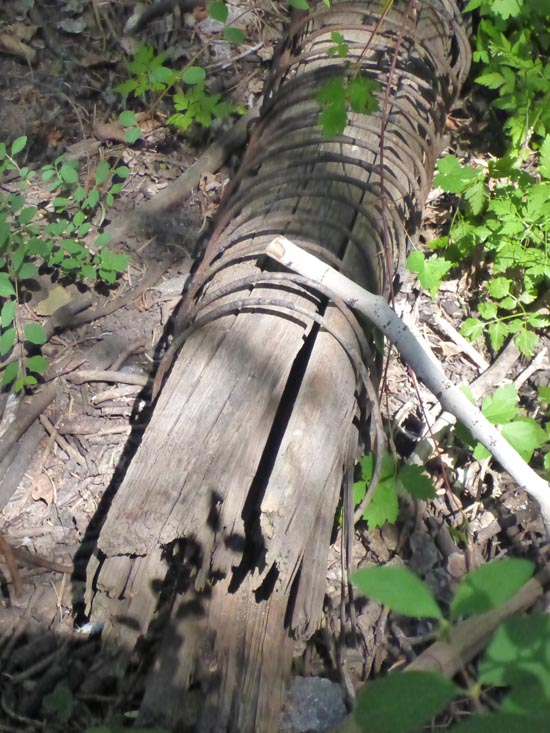
Pressurized water was used by the stamp mills in the canyon to wash and separate gold ore from dirt and debris. Originally, a 24" wooden pipe like this smaller pipe carried water from Bullion Falls above you to the Bully Boy Mill just below you. Note the large iron hooks on either side of the pipe that anchored the original pipe to the ground.
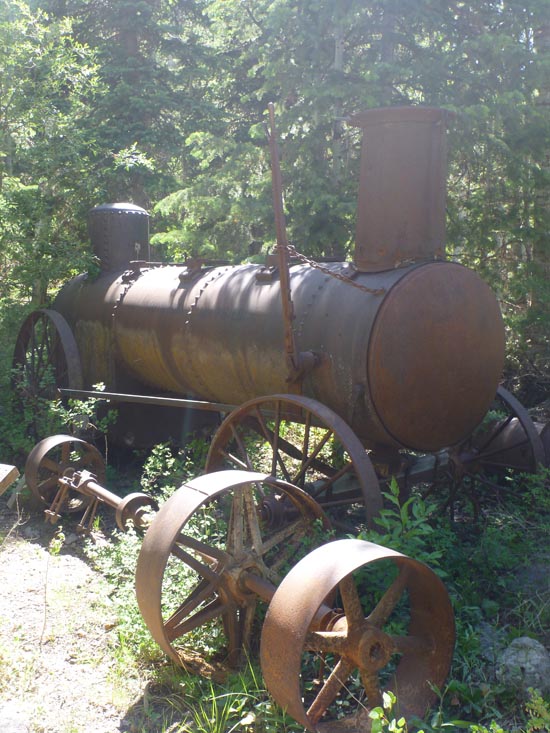
In the mines and mills of the canyon, piped water was converted to steam in boilers like the one before you. Steam was used to power pistons which ran the equipment necessary to ventilate mines and move, crush, separate and mill gold ore. This boiler, weighing more than 4 tons, was pulled by a team of 4 to 6 horses.

n your right is a stone boat. Pulled by a team of horses, boats hauled hundreds of pounds of gold ore over bone-jarring trails. Stone boads were used extensively in Bullion Canyon before the completion of the area's road system. On your left is an early car (ca. 1860s) which was used to truck ore from the mines. Built to run on 18 gauge track, the axles of this car have bee carved from cottonwood logs. Note the hand-wrought square nails used to build this car.
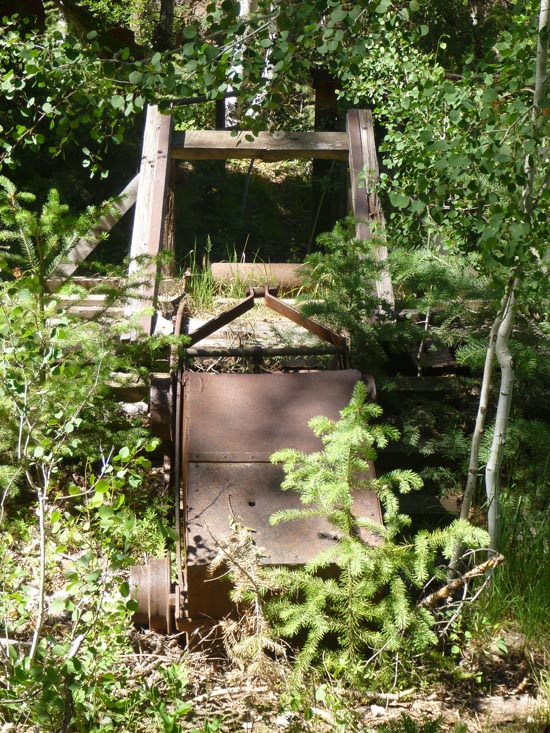
This tupe of ore car is called a skip. It runs in a mine shaft on a track inclined upward 30 to 60 degrees. In the early days, a horse or a hoistman winched the car up the shaft. Norice that the back wheels or "truck" are set wider than the front wheels. At the top of the shaft, the truck goes up a separate, elevated track. The elevated track tilts the back of the skip and causes it to dump its ore. This skip was used around 1950.
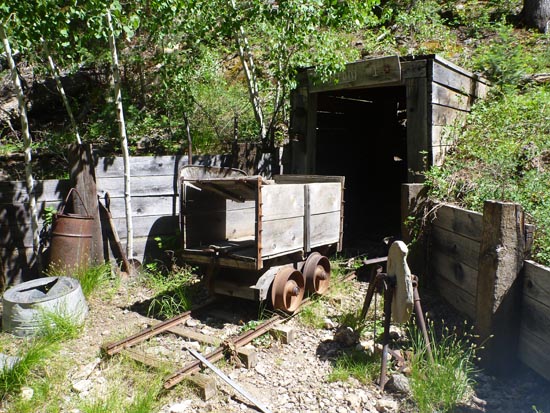
Picture yourself inside a very long and dark mine "tunnel" called an adit. For 12 to 14 hours a dary you would swing a sledge hammer or a pick against solid rock. If you couldn't afford a mule or horse, you loaded your cars with hundreds of pounds of ore and then pushed them by hand to the entrance of the adit. You then transferred the ore, again by hand, to an awaiting wagor or stone boat for the trip to the mill. Mining made many a man old before his time. Mining was also dangerous work. If a miner's adit had been shord up with wood and the wood eventually decayed, the rotting process used up large quantities of oxygen. Unfortunately, the oxygen in the adit was replaced with an unbreathable gas called carbon dioxide. Another danger wrose if a miner had cut through deposits of uranium in his search for gold. Radon gas, emitted from uranium, would collect in shafts often at dangerous levels. Years later, many miners would develop lung cancer. Mines continue to be hazardous places and should not be entered under any circumstance.
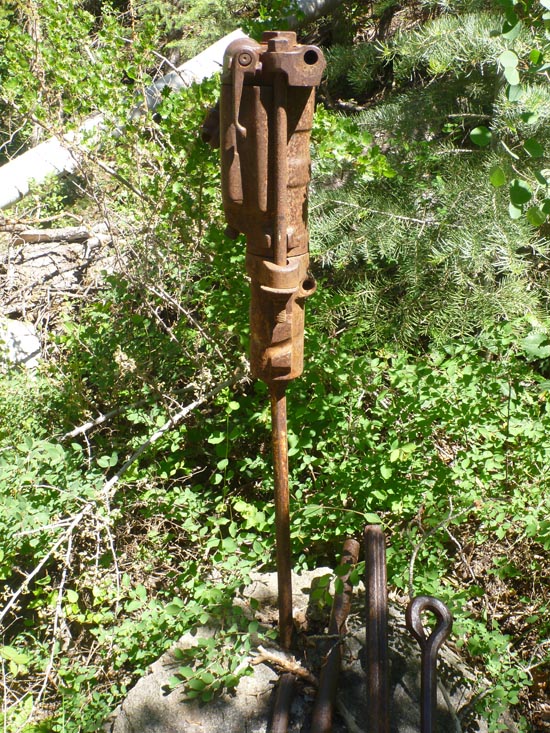
These drills were used to create pockets for sticks of dynamite which would blast tunnels through solid rock. All but two of the drills were used by hand and would have been hit repeatedly with a heavy sledge hammer. The large drill sticking out of the rock is a later type of drill (ca. 1910) powered by compressed air.

Adits are rarely "dug" but are frequently created with explosives. Explosions can't be set haphazardly; they're carefully channeled into a rockface by placing dynamite in drilled blast holes. This equipment seved as both mount and water supply for an air-powered drill. The bar supported the drill while the tank constantly bathed the drill and hole with water. Holes up to 400 feet deep could be drilled with this apparatus.

By the turn-of-the-century, new technology made life easier and more efficient for the miner. Like the compressed air drill back at the adit, ore cars were now pulled by air-powered locomotives. A work car called a mucker even loaded ore into trailing cars with a large motorized scoop. In front of you are a mucker and a car used in the Deer Trail Mine from 1900 to 1936. They were capable of loading and carrying over a ton of ore per trip.
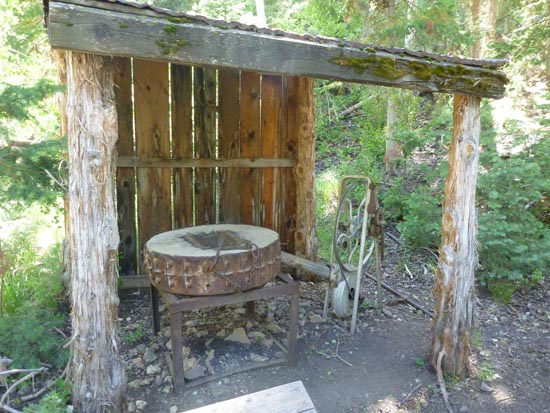
A self-contained hardware stone, called a "forge", sits before you! Especially in the older mines, miners were always at their forges sharpening and tempering red hot drill bits and hand tools. Because hardware stores were many miles away, the miner's forge was also used to build items such as hinges, pintels and nails and to fashion horse and mule shoes.
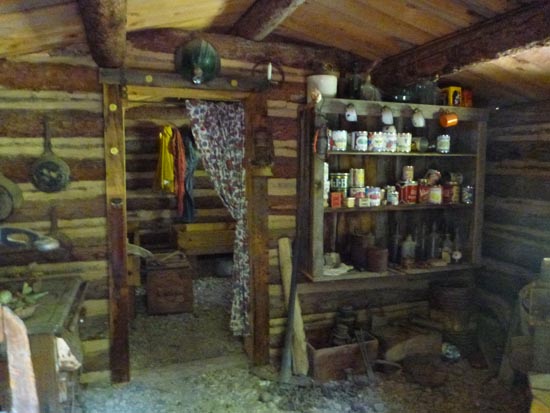
Was this cabin, called the Dalton Cabin by local folks, really built by the famous Dalton Gang? Are those bullet holes around the east-facing windows? What if we told you a Piute County Sherrif's posse made those holes in 1870 then they trapped the gang inside? Would you believe it if we said that a nine day siege by the posse killed four of the outlaws and that the surviving gang members were forced to eat Ned Dalton to stay alive? This story would make a great campfire tale but no such colorful history exists for this simple cabin! It was built by a miner in the 1920s on his claim about four miles above us at 10,500' elevation near Mt. Brigham's summit. It is very typical of mining cabins in this area. Ownership of this cabin was transferred to Myron Chellis "Chell" Dalton of Marysvale who bought the claim. The Dalton family lived in the cabin from June through November of each year while they mined for gold. Theone Dalton, son of Chell, fondly remembers those cool summer days and his mother's home cooking. In those days, most of hte family's meat came from the forest. On any given day, the meat in the stew pot could range from snowshoe rabbit to pine hen to venison. How does thsi cabin compare to your home? Could you be comfortable here for four to five months each year?

To load a whole train in a narrow space early 20th century miners used a "Cherry Picker" like this one. These contraptions would lift empty cars in the air and swing them into place behind a mucker working the rockface. When a car was filled, it was scooted backwards and another empty car was swung into place. Locomotives, also called motors, horses and trammers, pulled the train full of gold ore to the mine entrance where awaiting transportation took the ore to the mill.
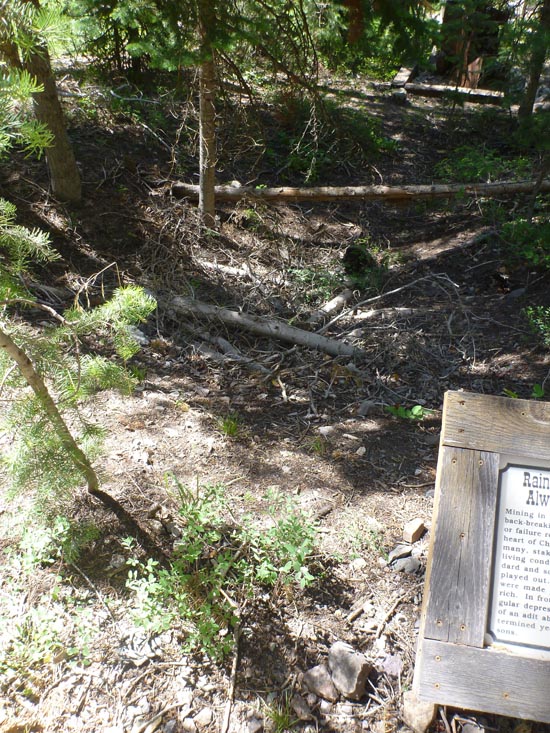
Mining in Bullion Canyon was a back-breaking job whose success or failure rested within the fickle heart of Chance. Hardships were many, stakes were hard to get, living conditions were sub-standard and sometimes a vein just played out. In fact, more men were made poor by mining than rich. In front of you is a rectangular depression - the beginnings of a adit abandoned in an undetermined year for unknown reasons.
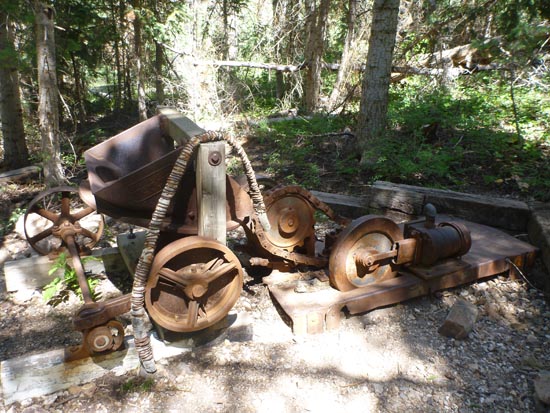
Sometimes the only difference between a miner who made money and one who went broke was an ability to successfully navigate a vein of ore as it snaked through a mountain. Veins of gold can be followed by continually testing for the presence and percentage of gold in mined ore. This piece of equipment is a steam-powered ore crusher used to prepare ore samples for testing. Ore was fed into the hopper on the left side of the machine and crushed on the right.
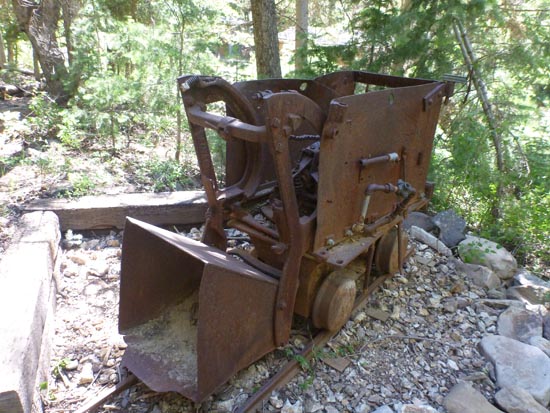
Mining has bee taking place here in Bullion Canyon for over 300 years. Mining has always been very important to the human race. Can you imagine your world without the products of mining? We would have no cars, trucks or trains (iron), airplanes (aluminum), satellites (gold), medicines and vitamins (lithium, magnesium), critical seasonings (salt) and nothing to conduct electricity (copper) or even generate it (coal, uranium) in waterless, windless or cloudy environments.
We hope you have gained an insight into early mining techniques and the role of mining in the history of Bullion Canyon. But remember - the sights, sounds, and smells of this canyon's gold camps are gone forever. However, you can help to create a future for the mine bulidings and artifacts that still cling to life all around you. Please report any diggins, collecting or defacing of these sites to the Piute County Sheriff.
Closest City or Region: Marysvale, Utah
Coordinates: 38.411056, -112.332131
By Jeremy Dye
Tara and I did the Canyon of Gold Driving Tour in Bullion Canyon, then we meandered through the Miners' Park Historical Trail.